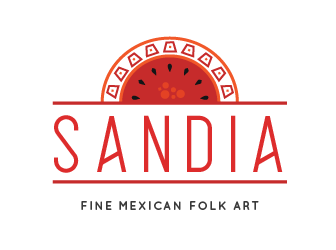
How are Alebrijes, Oaxacan wood carvings made?
Alebrijes are carved wooden figures created by Oaxacan artisans. They have become so popular that even the world’s most respected Spanish language authority, the La Real Academia de la Lengua Española, Spanish Royal Academy, has included the term “Alebrijes” in its official Spanish language dictionary. The term “Alebrijes” originated from the name Mr. Pedro Linares of Mexico City gave to his fantastic, internationally recognized paper maché creations.

Most Oaxacan artisans call them figuras "wooden figures", naming them after the animal which they carved, such as the deer, raccoon, leopard, etc.. Still, when a fantastic figure is elaborated, the artisan must say he has created an "alebrije."
The creative process of making a wooden figure begins with the artisan imagining a form. On occasion, ideas arise spontaneously, but sometimes, artisans spend days or even months imagining a very special figure. The wooden piece is then chosen. It will be used to create the figure in his mind. Most artisans carve their figures using “copalillo” wood. A few others use " tzompantli" and cedar.
The copalillo is a tree that grows in warm regions of Oaxaca. There are several species; scientifically, it belongs to the Burseras family. Artisans classify copalillo trees as either male or female. They quickly differentiate between them by simply looking at and smelling the tree.
The ideal "copal or copalillo" is the female, which doesn't have "knots" in its bark and smells somewhat like a lime (citric fruit). The female is used because it is softer and easier to carve. The male copal is not used because of imperfections in its bark and its hardness, which makes it extremely difficult to carve.
Once the branch or the wooden piece has been selected, it is cut from the tree.

Some artisans prefer to carve the wood immediately to take advantage of the softness. Then, they leave it to dry in the sun for two or three days.
Once in the shop, its shell is removed. Initial cuts are made with the machete to form a rough idea of what the artisan has imagined, giving it an initial proportion and size. Eventually, during the process, they start using finer and sharper blades that are more precise and make finer cuts. Some artisans use other tools apart from knives and blades, such as chisels, mallets, blades of different shapes and sizes, etc.

Once the figure has been carved, it is exposed to the sun. The time the figure spends under the sun depends on its size: the small ones only a day, the big ones up to a month. Some artisans prefer drying the figures in the shade so that the drying is more natural, not abrupt, and exposed to the sun’s rays.
After ensuring the figure is completely dry, the artisan sands it down. Depending on the size of the figure, sanding can take anywhere from an hour to a whole day.

Once the figure is entirely smooth and imperfections have been covered, a coat of color paint is applied. This will serve as a base for the decoration. Brushes and paintbrushes of all sizes are used to paint the figures. The decoration depends on each artisan's imagination, ability, and dedication. The detail in a figure indicates the amount of time the artisan invested in elaborating that figure.
The first artisans struggled greatly to find appropriate tools and paints to create their figures. But with time, decoration and carving techniques evolved.
How newer figures are made demonstrates the evolution and improvement of carving techniques. In the past, it was common for artisans to assemble a figure from several pieces. Nowadays, there is a tendency to craft figures from a single piece, leaving only detachable parts such as ears or horns.
 As for the painting, the first figures were colored rustically using natural paint such as lime and nopal cochinilla cochineal. Maguey thorns, reed chips with tips, and toothpicks were used for the decoration of points; now there are appropriate paintbrushes to carry out the dotting, the lining, or the stains; of course, the only thing that you cannot substitute is the genius and the artisan's ability.
As for the painting, the first figures were colored rustically using natural paint such as lime and nopal cochinilla cochineal. Maguey thorns, reed chips with tips, and toothpicks were used for the decoration of points; now there are appropriate paintbrushes to carry out the dotting, the lining, or the stains; of course, the only thing that you cannot substitute is the genius and the artisan's ability.
Each artisan uses or modifies their tools to transform their creativity into a wooden figurine more easily, giving life to an unreplicable, unrepeatable, and unique figure. The artists always pour their effort and heart into their work, leaving a trace of their essence in each figure they create.
You might like to read:
Our Guide to Collecting Alebrijes
